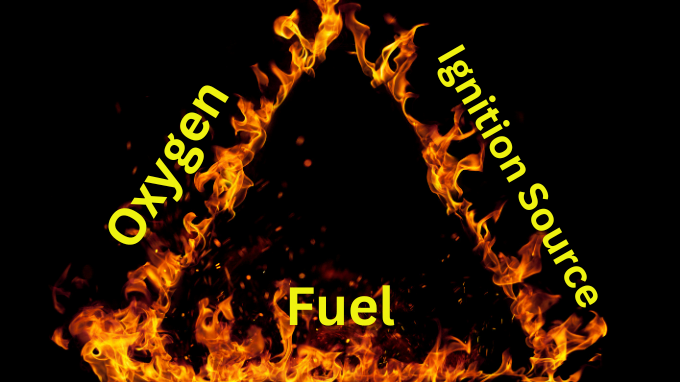
Understanding the Fire Triangle: Heat, Fuel, and Oxygen
Fire has fascinated and frightened humanity for millennia. Its destructive power is evident in the annals of history, yet fire has been harnessed for warmth, cooking, and industry since time immemorial. To comprehend the dynamics of fire, scientists and safety experts developed the concept of the fire triangle. This simple model illustrates the three essential elements required for most fires to ignite and sustain: heat, fuel, and an oxidizing agent, usually oxygen. In this article, we will delve into the components of the fire triangle, their significance, and how manipulating them can prevent or extinguish fires.
The Fire Triangle: Heat, Fuel, and Oxygen
- Heat: The Ignition Source At the heart of the fire triangle lies the ignition source or heat. Without heat, a fire cannot begin. Heat is needed to raise the temperature of a combustible material to its ignition point, the temperature at which it starts to burn. Once this threshold is reached, the material will continue to burn as long as heat is supplied. Heat sources can vary from a simple match or spark to electrical equipment generating excess heat. To prevent or extinguish a fire, it’s crucial to eliminate or cool down the heat source. Water is a common cooling agent for many fires, but it may not work for all types.
- Fuel: The Combustible Material Fuel is the substance that burns in a fire. It can be anything from wood, paper, gasoline, to complex chemicals. For a fire to occur, there must be enough fuel present. If you remove or separate the fuel from the heat source or oxygen, the fire will be extinguished. For example, in forest fires, firefighters often separate burning logs from each other to reduce the availability of fuel. Turning off the electricity in an electrical fire removes the heat source but does not eliminate the fuel, which may have already caught fire.
- Oxygen: The Oxidizing Agent Oxygen is the third element of the fire triangle, and it’s essential for combustion. A fire cannot start without oxygen, and if you remove or limit its supply, the fire will go out. This can be achieved by covering the fire with a fire blanket or using substances like foam or carbon dioxide to displace oxygen from the fire’s vicinity. In some cases, fires can be isolated from oxygen by closing them off in a sealed space until they consume all available oxygen.
The Chemical Reaction: Fire’s Fourth Element
While the fire triangle comprises heat, fuel, and oxygen, there is an important fourth element at play: the chemical, exothermic reaction that is fire. This reaction involves complex chemical processes where the fuel molecules break apart and recombine with oxygen to release heat, light, and various combustion byproducts. This exothermic reaction is what we perceive as fire.
Application in Electrical Safety
The principles of the fire triangle are not limited to understanding and fighting wildfires or household fires. They are also crucial in electrical safety, especially when dealing with electrical installations and equipment. In this context, the elements of the fire triangle are slightly different:
- Ignition Source: In electrical installations, ignition sources can be arcs, sparks, or heat generated by equipment.
- Oxygen: This corresponds to the presence of air or other oxidizing atmospheres.
- Fuel: In electrical installations, fuel can be in the form of flammable gases or vapors, combustible dusts, or ignitible flyings or fibers.
To ensure safe electrical installations and prevent fire hazards, it is imperative to comply with established electrical codes and regulations, such as the Philippine Electrical Code. Furthermore, it is advisable to entrust electrical work to Licensed Electrical Practitioners (LEPs) who are well-trained and knowledgeable about electrical safety protocols.
Conclusion
Understanding the fire triangle is essential for fire safety and prevention. By grasping the interplay of heat, fuel, and oxygen, we can make informed decisions to extinguish fires or prevent them from starting in the first place. Whether it’s a campfire in the wilderness or an electrical installation in an industrial setting, the principles of the fire triangle are universal and vital for our safety and well-being. Remember, when it comes to electrical installations, always consult a Licensed Electrical Practitioner to ensure a safe and compliant setup.






